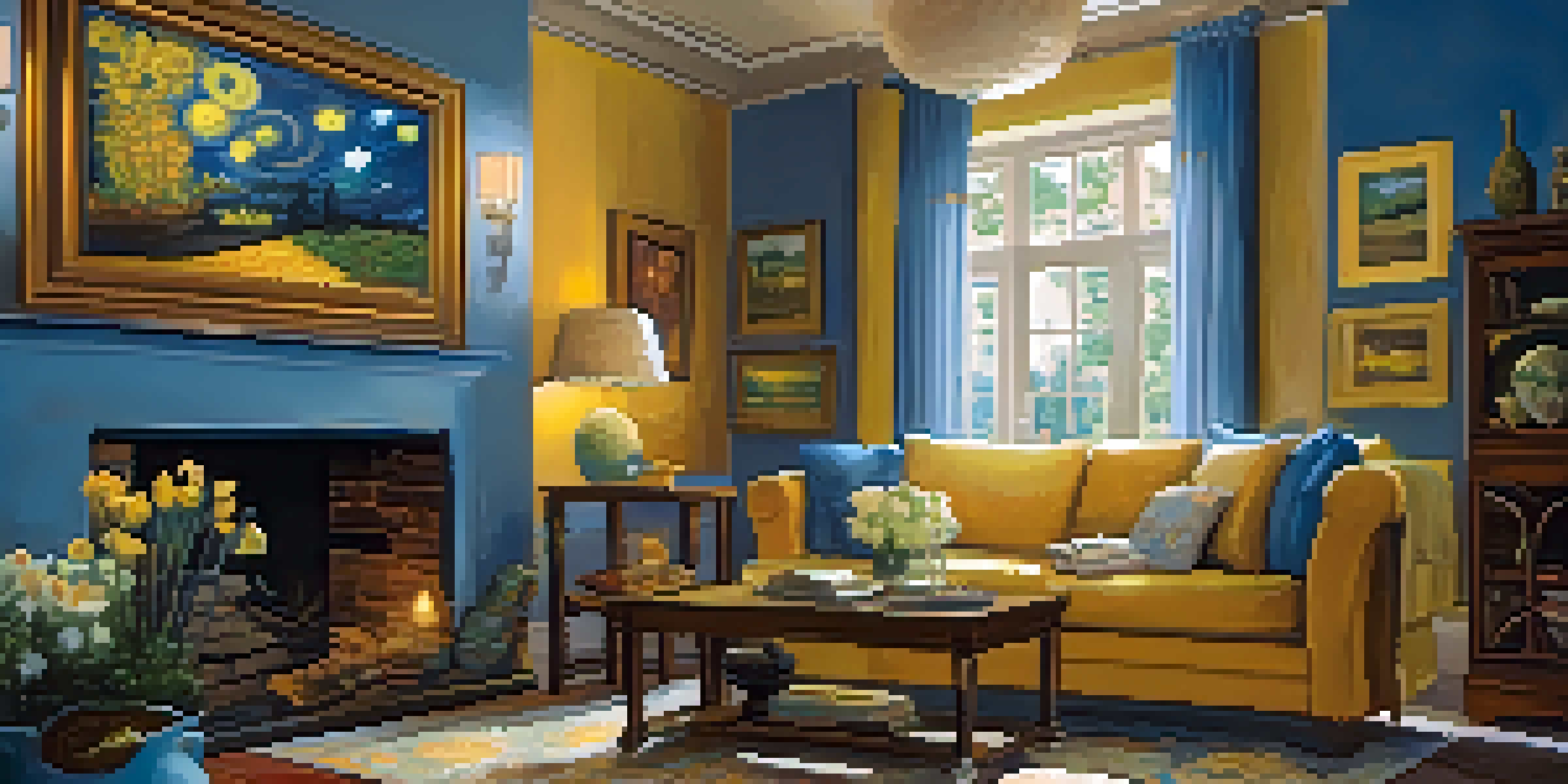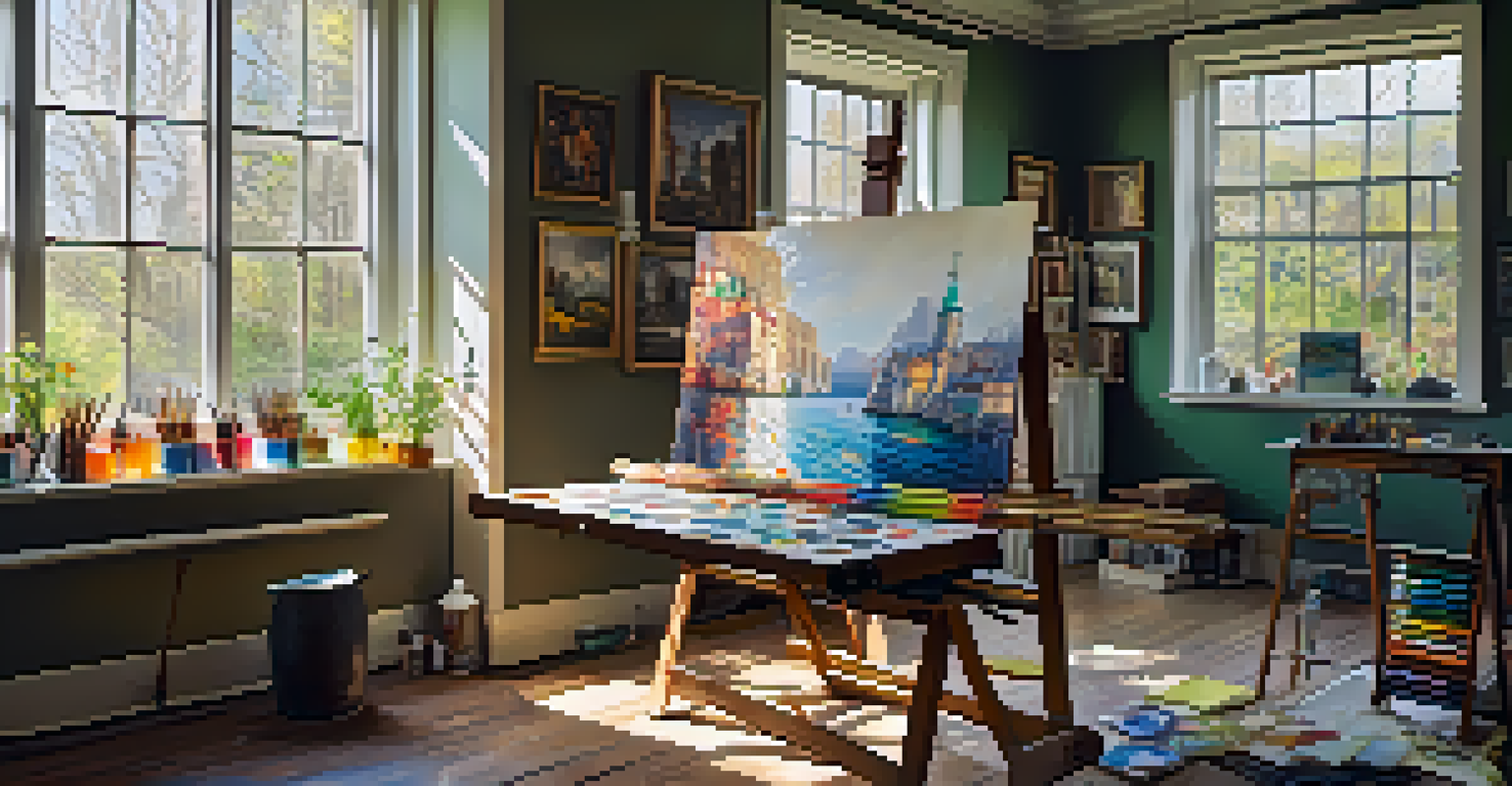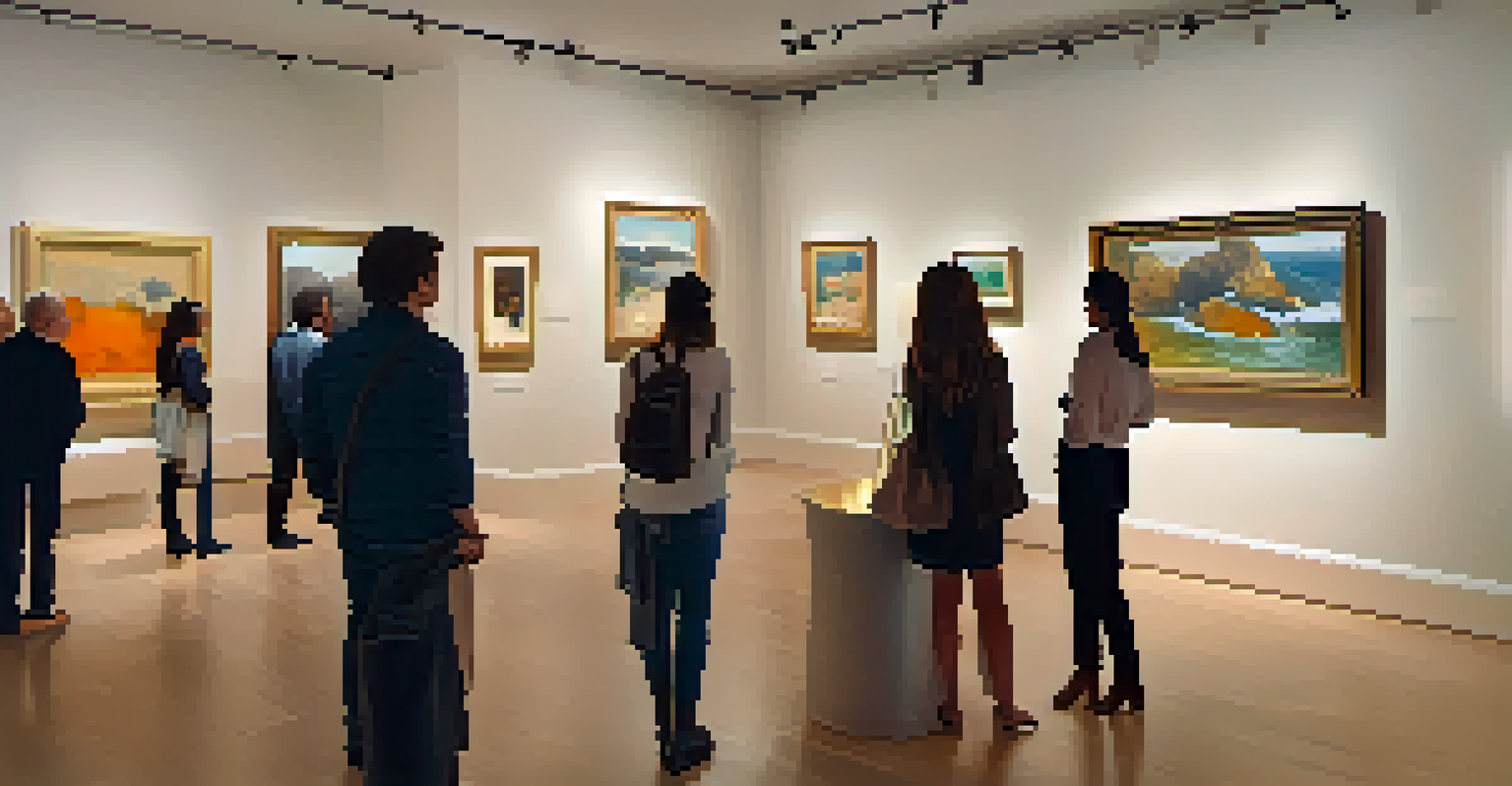Economic Impact of Art Reproductions on Original Artists

Understanding Art Reproductions and Their Appeal
Art reproductions refer to copies of original artworks, often created using various techniques such as printing or digital reproduction. These reproductions allow a wider audience to access and appreciate art that may otherwise be too expensive or inaccessible. Additionally, they can bring the aesthetic of renowned pieces into everyday spaces, making art a part of daily life for many.
Art is not what you see, but what you make others see.
For example, think of a famous painting like Van Gogh's 'Starry Night.' While owning the original is a dream for many, reproductions allow countless people to enjoy its beauty in their homes. This accessibility can foster a deeper appreciation for art and encourage individuals to explore original works later on.
However, this popularity also raises questions about the economic impact on the original artists. As reproductions proliferate, the value of the original works may shift, influencing the financial landscape for artists.
The Double-Edged Sword of Increased Exposure
One of the most significant impacts of art reproductions is the increased exposure they provide to original artists. When a piece of art is reproduced, it often reaches a broader audience, which can lead to heightened interest in the artist's original work. This exposure can translate to increased visibility in galleries and exhibitions, potentially boosting sales of original pieces.

Imagine an artist whose work is featured in a popular reproduction series. Their name becomes more recognizable, drawing in art enthusiasts who might not have discovered them otherwise. This scenario illustrates how reproductions can act as a marketing tool, creating a ripple effect that benefits the artist.
Art Reproductions Enhance Accessibility
Reproductions allow more people to enjoy and appreciate famous artworks that may otherwise be too costly or inaccessible.
However, the downside is that some may choose reproductions over originals, believing that owning a copy suffices. This can lead to a decline in demand for the original works, complicating the financial situation for the artists.
Impact on Original Artwork Value and Market
The presence of reproductions can affect the perceived value of original artworks. When reproductions are readily available, potential buyers may hesitate to invest in an original piece, thinking they can simply purchase a copy instead. This shift in market dynamics can create challenges for artists trying to maintain their work's worth.
The best artist has no conception that a marble block does not contain within it.
For instance, if an artist sells a reproduction for a lower price, it may lead collectors to undervalue the original. This phenomenon can sometimes diminish the financial incentives for artists to create new works, as their earnings from originals may no longer reflect their effort and skill.
Ultimately, artists must navigate this complex landscape, balancing the benefits of exposure against the potential devaluation of their work.
Art Reproductions and Copyright Considerations
Copyright plays a critical role in the relationship between original artists and reproductions. When an artist creates a work, they hold the rights to that piece, which includes control over reproductions. However, unauthorized reproductions can pose a significant threat, leading to potential financial losses for the artist.
For example, if a popular artwork is reproduced without the artist's permission, it could flood the market, leading to decreased sales of the original. This situation highlights the importance of protecting intellectual property in the art world, ensuring that artists receive recognition and compensation for their creations.
Exposure Boosts Artist Visibility
Increased exposure from reproductions can lead to greater interest in original works, benefiting artists in the long run.
Artists must be proactive in managing their rights and may need to seek legal assistance to address unauthorized reproductions, which can be both time-consuming and costly.
Emotional and Psychological Aspects for Artists
The impact of reproductions isn't solely economic; it also affects artists emotionally and psychologically. Owning the rights to their work and seeing it reproduced can evoke a mix of pride and concern. While many appreciate the acknowledgment their work receives, they may also worry about the implications for their livelihood.
Consider an artist who sees their work widely reproduced. On one hand, they may feel validated by the recognition; on the other, they might grapple with feelings of insecurity about their original pieces' value. This duality can create a complex emotional landscape for artists as they navigate their careers.
Understanding these emotional aspects is essential for appreciating the broader implications of art reproductions on original creators.
Navigating the Digital Age of Art Reproductions
In today's digital age, the ease of creating and distributing art reproductions has transformed the landscape for original artists. Online platforms allow reproductions to reach global audiences quickly, which can amplify both the benefits and challenges associated with exposure. Artists must adapt to this evolving environment to protect their work while still embracing new opportunities.
Take, for instance, an artist who sells their original works online. They may also offer limited edition reproductions to cater to a broader audience. This strategy allows them to capitalize on the popularity of their art while maintaining the integrity of their original pieces.
Copyright Issues Affect Artists' Rights
Unauthorized reproductions can threaten artists financially, emphasizing the need for strong protection of their intellectual property.
Navigating this digital shift requires artists to balance accessibility with exclusivity, ensuring they remain relevant in a rapidly changing market.
Future Outlook for Original Artists in the Reproduction Era
Looking ahead, the relationship between art reproductions and original artists will likely continue to evolve. As technology advances and more artists enter the market, the demand for both originals and reproductions may fluctuate. Original artists must remain adaptable and innovative to thrive in this dynamic environment.
One potential avenue for growth is the collaboration between original artists and reproduction companies. By working together, they can create mutually beneficial arrangements, ensuring artists receive fair compensation while still reaching wider audiences.

The future may hold exciting possibilities for artists willing to embrace change and explore new ways to engage with their audience, ensuring their work continues to be valued and celebrated.